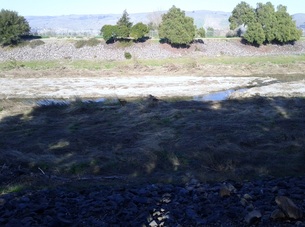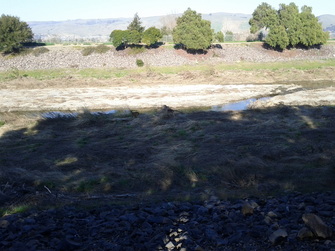
When I was walking our puppy on the trial near my house, I saw a deer family. I almost missed them because they were so well-hidden in the brush. It inspired me to discuss "camouflage" with my girls. My older daughter knew about it; we had a fascinating discussion, followed by 20 minutes of trying to spot both the deer. Try as they might, it was difficult for the girls to spot the second one. Check these pictures and see if you can spot the two deer.
What is Camouflage? Do you know that some animals blend in with their environment? When animals blend in with their habitats, we call it a "camouflage." Why do you think some animals need to camouflage themselves? Children can explore how different animals use camouflage to stay safe in their habitats, to help them hunt, or to communicate with others.
Camouflage is a way for animals to hide themselves from predators, specially those who hunt using their eyes instead of their sense of smell. Some animals are born with similar markings to leaves, grasses or stones that are always present in their environment. Some animals have special patterns, or markings that help them blend in with each other and confuse predators. The Bengal Tiger's stripes help it to camouflage itself in the grass. But isn't the tiger a predator? Why would it need protection? The tiger is both a predator and also a prey. The tiger can camouflage itself in the tall grass and be unseen by the animal it is going to prey on. The tiger is hunted for its beautiful skin and is now an endangered species. Its stripes appear like shadows in the grass when sunlight falls on it, thus hiding it from poachers.
Walking sticks, with their dark skinny bodies and swollen joints, escape predators due to their resemblance to twigs. Certain animals change their appearance as their surroundings change. An octopus changes the color and texture of its skin really fast to hide in the changing ocean floor. The Arctic fox changes its fur color based on the seasons. In the warmer months, the Arctic fox grows brown fur to hide in the trees, and in winter, it grows white fur to hide in the snow.
Some animals change colors to express their mood! Chameleons can turn yellow, dark blue, or even black if they become angry. Some animals use mimicry to confuse and avoid predators. Mimicry is a form of camouflage in which an animal resembles another animal. Some harmless snakes—and even some caterpillars—mimic rattlesnakes in appearance and behavior in order to be left alone.
Exploring Further
1. Go on a nature walk during the day and see if you can spot any animals that are camouflaged. Try to identify them.
2. Get your friends together and try this: some of of you can wear light colored-clothes and others dark-colored. Now play hide and go seek in the twilight / dark. What is easier to spot? The light-colored clothes or the dark-colored clothes? Why?
What is Camouflage? Do you know that some animals blend in with their environment? When animals blend in with their habitats, we call it a "camouflage." Why do you think some animals need to camouflage themselves? Children can explore how different animals use camouflage to stay safe in their habitats, to help them hunt, or to communicate with others.
Camouflage is a way for animals to hide themselves from predators, specially those who hunt using their eyes instead of their sense of smell. Some animals are born with similar markings to leaves, grasses or stones that are always present in their environment. Some animals have special patterns, or markings that help them blend in with each other and confuse predators. The Bengal Tiger's stripes help it to camouflage itself in the grass. But isn't the tiger a predator? Why would it need protection? The tiger is both a predator and also a prey. The tiger can camouflage itself in the tall grass and be unseen by the animal it is going to prey on. The tiger is hunted for its beautiful skin and is now an endangered species. Its stripes appear like shadows in the grass when sunlight falls on it, thus hiding it from poachers.
Walking sticks, with their dark skinny bodies and swollen joints, escape predators due to their resemblance to twigs. Certain animals change their appearance as their surroundings change. An octopus changes the color and texture of its skin really fast to hide in the changing ocean floor. The Arctic fox changes its fur color based on the seasons. In the warmer months, the Arctic fox grows brown fur to hide in the trees, and in winter, it grows white fur to hide in the snow.
Some animals change colors to express their mood! Chameleons can turn yellow, dark blue, or even black if they become angry. Some animals use mimicry to confuse and avoid predators. Mimicry is a form of camouflage in which an animal resembles another animal. Some harmless snakes—and even some caterpillars—mimic rattlesnakes in appearance and behavior in order to be left alone.
Exploring Further
1. Go on a nature walk during the day and see if you can spot any animals that are camouflaged. Try to identify them.
2. Get your friends together and try this: some of of you can wear light colored-clothes and others dark-colored. Now play hide and go seek in the twilight / dark. What is easier to spot? The light-colored clothes or the dark-colored clothes? Why?


 RSS Feed
RSS Feed
